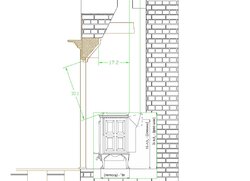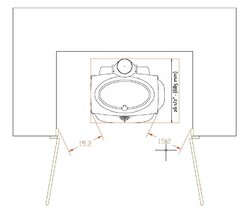Joful, can you use heat shields to satisfy you clearance problems? My stove is in a 19th century fireplace and they fabricated sheet metal shields to protect the mantle. It would not have passed the fire inspection otherwise.
Well, I didn't want to hijack this thread, but seeing as this is in the vein of the original question... Yes I can, to some degree. I can and will protect any combustables closer than the defined or default NFPA clerances allow with heat shields. The bigger question is the combustables further up inside the fireplace, which are more than 36" from the stove, but in a confined space (alcove?) above.
The lintel in both fireplaces is a no-brainer. No clearance is specified for something above and in front of the stove, so I am told we must assume 36" for that. I have 24" to the one in my avatar (which has been in continuous use since 1993, and 31" on the other fireplace where I'm doing the new install. Both will get heat shields in the next week or two.

Door jambs are more questionable, as they're off the front corners of the stove, and again no clearance is given for front corners in the manual. If I use the rear corner clearance (12") I'd be fine on the new install, but if I use the safer side clearance (21") I fail. I can make heat shields for these door jambs, although I'm really going to hate looking at them, and it's not even totall clear how they could be attached, air gap, etc.

The bigger question is some of the wood timbers and wood boxes built into the walls further up inside the fireplace, in the area where one would call the "smoke chamber" in a fireplace. These features exceed the default clearance of 36" for any combustable not otherwise specified in the manual, but they're in a confined space above the stove, not in open space. Some of these components would be very difficult, if not impossible to shield. There is some debate in my mind as to whether this qualifies as an "alcove" or not, and the few times that question has been posted here on the forum, I've received varied answers.
My plan? Install, continue to research (I have several good papers on the subject already), and monitor. If I see any of these wood components up in there getting warm enough for even the most remote concern, I'll be looking for a stove where the clearances are better defined. The cost of the stove is no issue for me, but finding a good catalytic stove that doesn't look hideous or require side-only loading is.


 You are missing the point
You are missing the point

